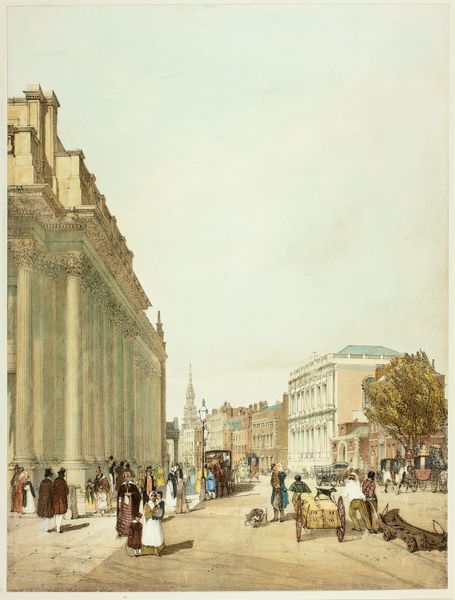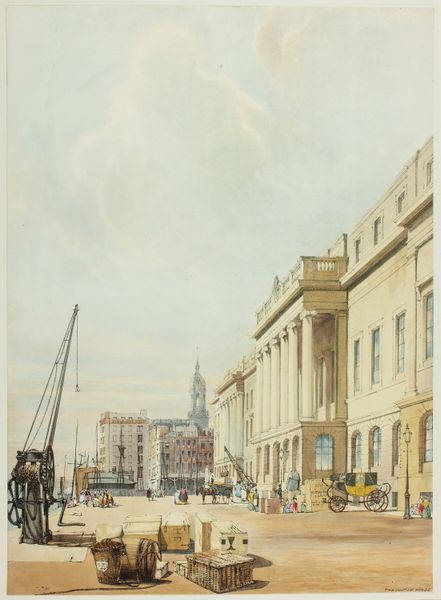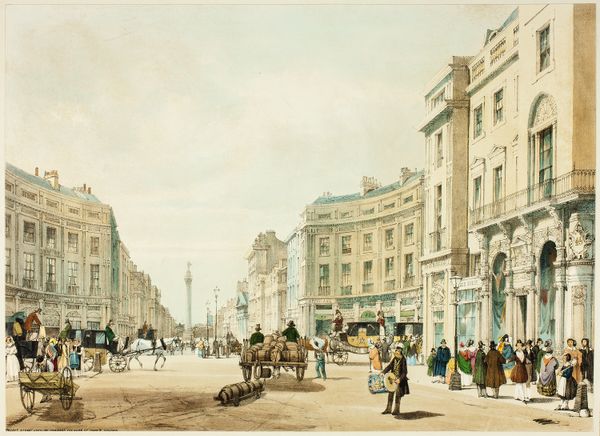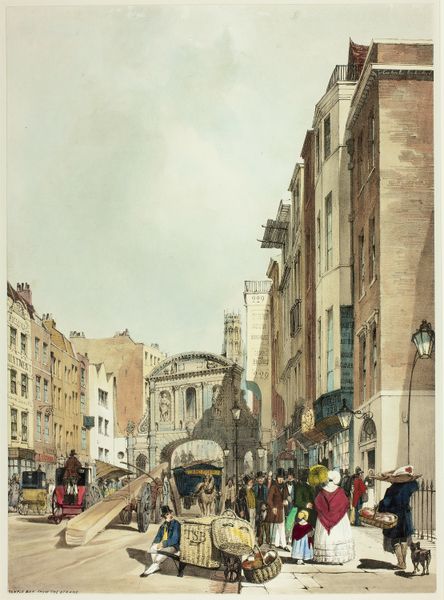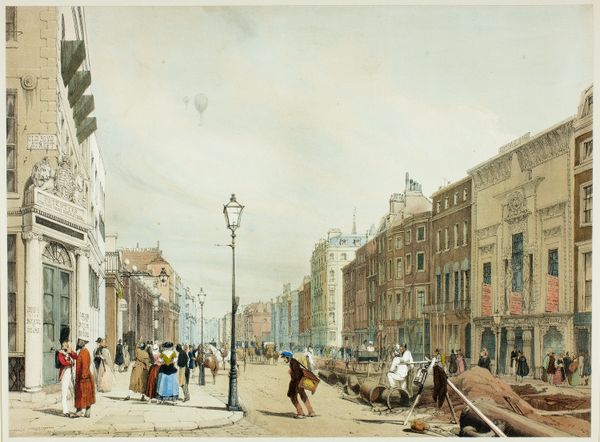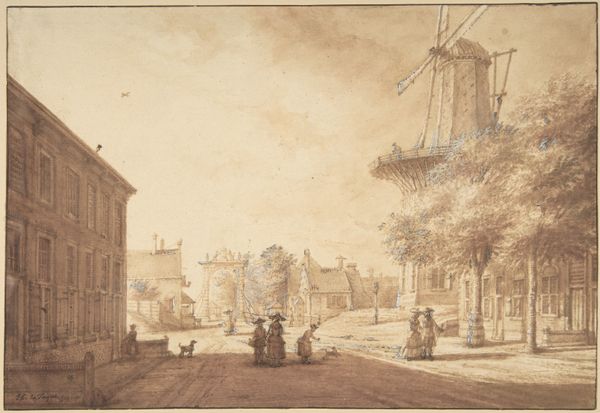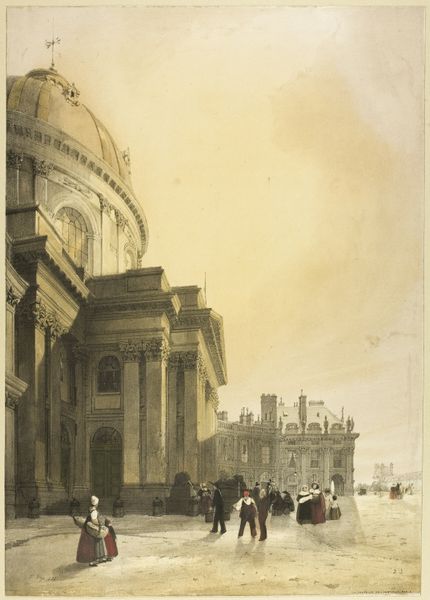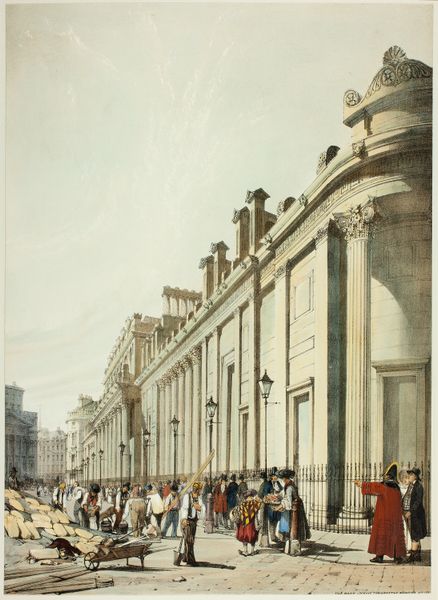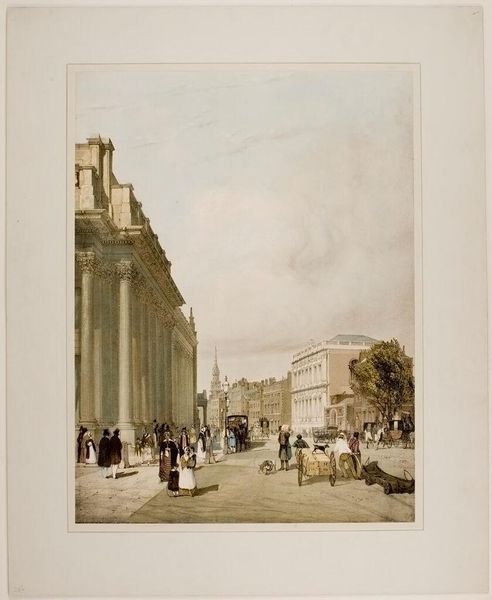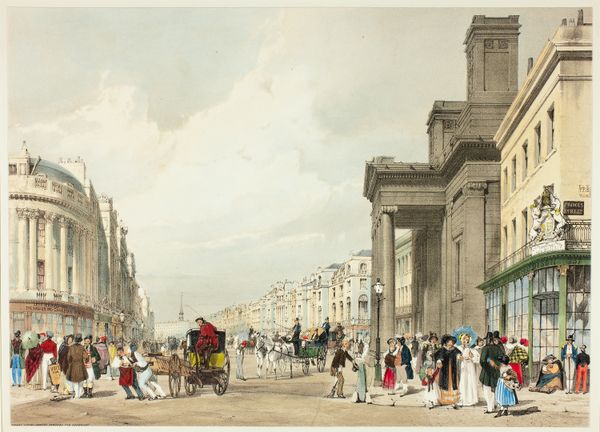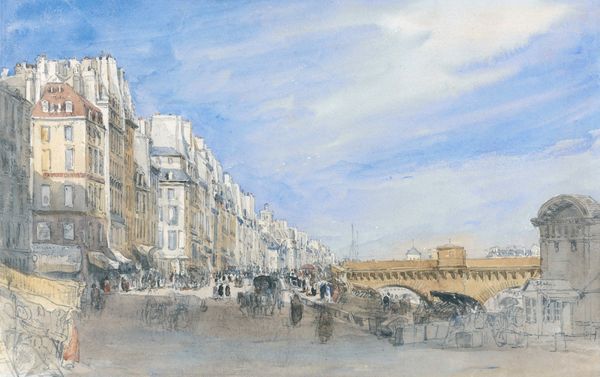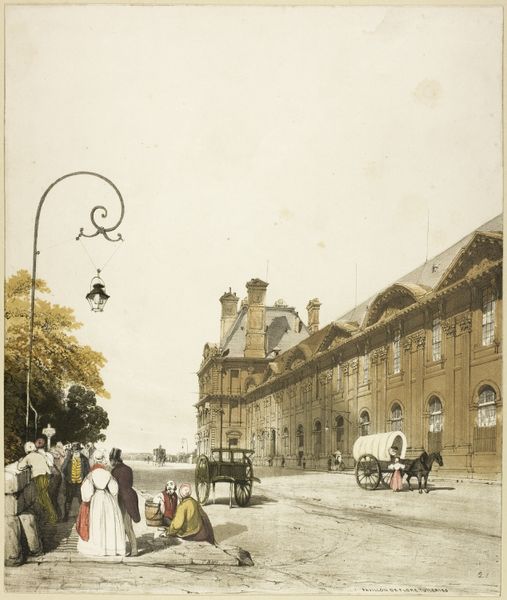
Hyde Park Corner, plate fifteen from Original Views of London as It Is 1842
0:00
0:00
drawing, lithograph, painting, print, paper, watercolor, architecture
#
drawing
#
16_19th-century
#
lithograph
#
painting
# print
#
perspective
#
paper
#
watercolor
#
romanticism
#
cityscape
#
genre-painting
#
academic-art
#
watercolor
#
architecture
Dimensions: 304 × 427 mm
Copyright: Public Domain
Editor: So, this is "Hyde Park Corner, plate fifteen from Original Views of London as It Is," created by Thomas Shotter Boys in 1842. It seems to be a watercolor lithograph depicting a busy street scene. The composition is quite striking with the grand architecture receding into the distance. What do you see in this piece, particularly concerning its visual language? Curator: What immediately strikes me is the use of classical architectural motifs juxtaposed with everyday life. Those columns and pediments are a clear invocation of power, order, and permanence - Roman ideals transplanted into the heart of 19th century London. Notice how the artist places the figures - some are elegantly dressed and some appear to be common labourers, this reinforces the visual symbolism of London as a center for trade. Editor: That's a fantastic observation. It's almost as if the architecture is a stage for the everyday drama of London life. Curator: Exactly. The artist uses the built environment not merely as background, but as a signifier, a shorthand for the values and aspirations of the British Empire. It's about civic pride but perhaps something more? Is it possible this piece alludes to the social divides beneath London's facade? Are the activities of common workers somewhat obscuring, but also serving the purposes of, London’s civic pride? Editor: That's an interesting idea! I hadn’t considered the potential social commentary embedded within what seems like a straightforward cityscape. Curator: Think about the visual weight given to different elements. While the buildings project stability and history, the figures represent action, movement, commerce. Consider also, that the buildings shown served as both homes and points of business. Editor: I’m beginning to see how the artwork encapsulates the different realities and faces that London possesses and the complicated social interactions and commerce which tie these aspects of society together. Thanks for highlighting that! Curator: Indeed. Visual analysis invites further questioning. Looking through art requires looking behind it as well.
Comments
No comments
Be the first to comment and join the conversation on the ultimate creative platform.
